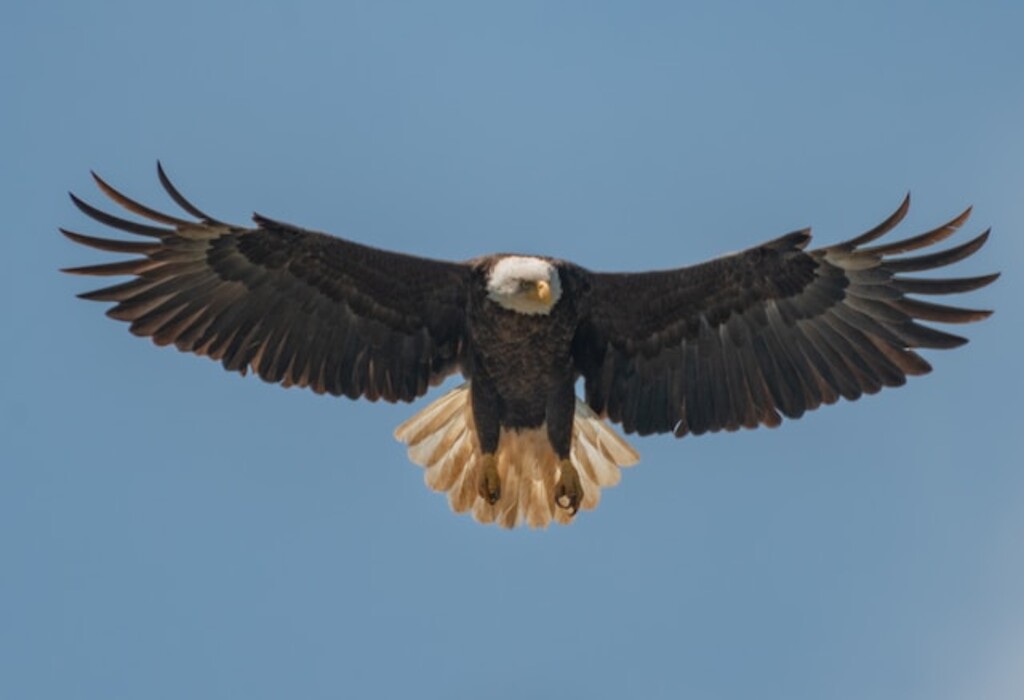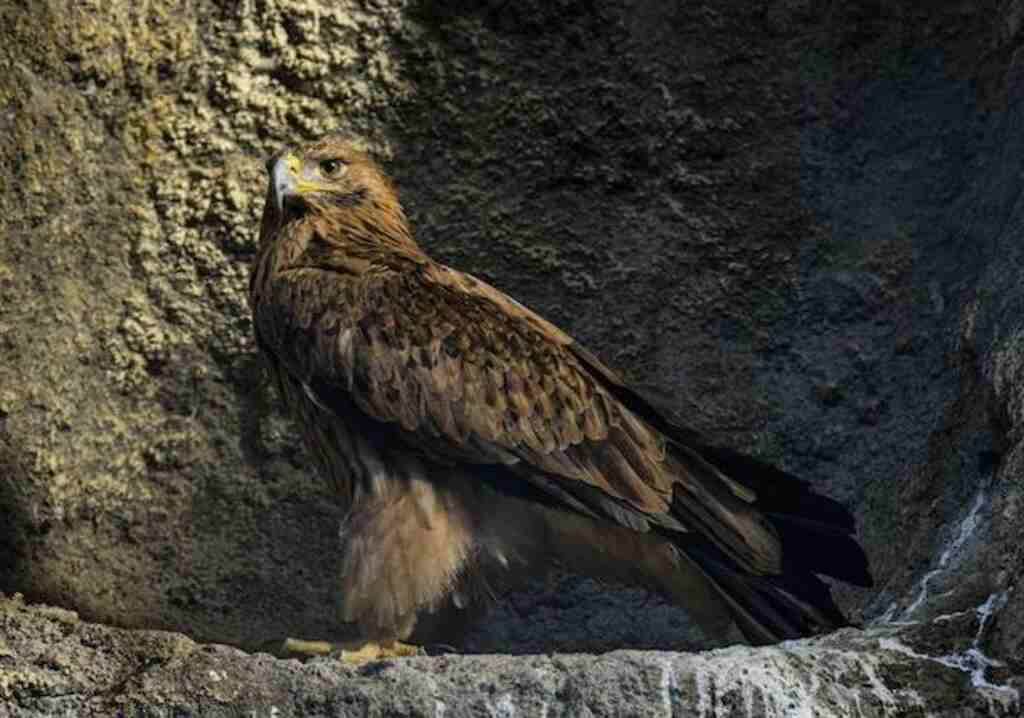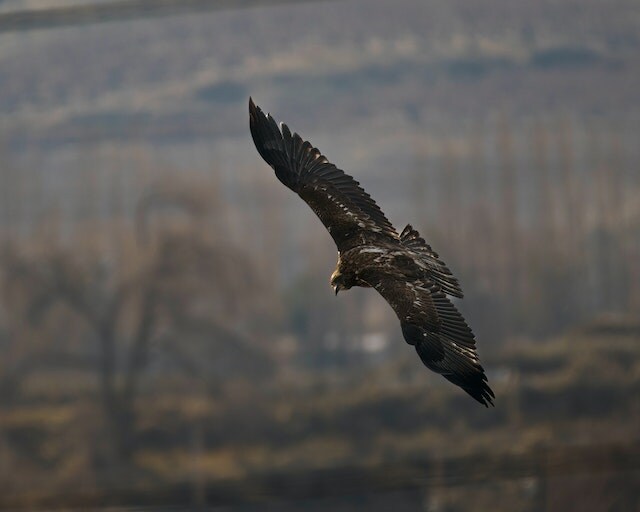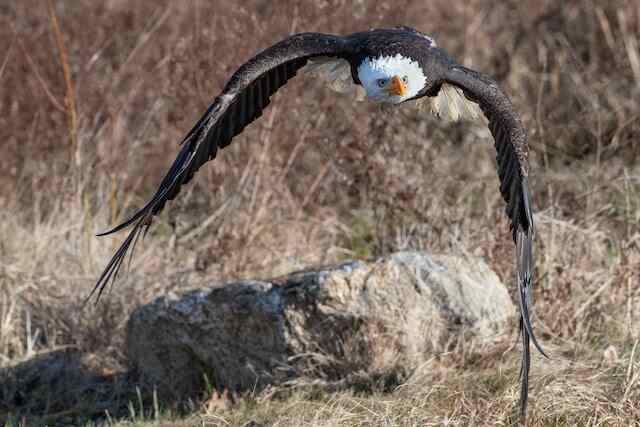Do Eagles Eat Foxes? Prepare for an enthralling journey as we unveil the unexpected twist in the predator-prey saga.
Recent studies reveal that despite their reputation, majestic eagles occasionally indulge in fox feasts.
Join us in unraveling the captivating dynamics between these fierce creatures, exploring their habitats, hunting techniques, and prey preferences.
From scientific insights to rare anecdotes, this article provides a comprehensive analysis that satiates both your curiosity and thirst for knowledge.
Table of Contents
- 1 Key Takeaways
- 2 Eagle and Fox Hunting Techniques
- 3 Natural Habitat and Behavior of Eagles
- 4 Natural Habitat and Behavior of Foxes
- 5 Interactions Between Eagles and Foxes
- 6 Prey Preferences of Eagles
- 7 Prey Preferences of Foxes
- 8 Predation Dynamics in the Animal Kingdom
- 9 Other Predators of Foxes
- 10 Rare Occurrences and Anecdotal Evidence
- 11 Frequently Asked Questions
- 11.1 Are eagles and foxes found in the same geographical areas?
- 11.2 How do eagles and foxes adapt to their respective natural habitats?
- 11.3 Are there any other animals that eagles and foxes commonly prey upon?
- 11.4 Do eagles and foxes ever cooperate or compete with each other for food?
- 11.5 Are there any documented cases of eagles preying on foxes or vice versa?
- 12 Conclusion
- 13 Author
Key Takeaways
- Eagles occasionally prey on foxes, challenging our understanding of predation dynamics in the animal kingdom.
- Eagles and foxes employ different hunting techniques, with eagles using talons and speed, and foxes using teeth and claws.
- Instances of eagles successfully capturing and consuming foxes demonstrate the power and skill of these avian predators.
- The predator-prey relationship between eagles and foxes is crucial for maintaining ecological balance.
Eagle and Fox Hunting Techniques
Eagles and foxes employ distinct hunting strategies to secure their prey, showcasing their remarkable adaptability and specialized skills in capturing food.
Eagles, being powerful birds of prey, rely on their exceptional vision and speed to hunt effectively. They typically soar high in the sky, scanning the ground below for potential prey.
Once they spot a target, eagles use their sharp talons to swoop down and snatch it up with great precision.
On the other hand, foxes are cunning predators that rely on stealth and agility. They use their keen sense of hearing and smell to locate prey, often stalking it patiently before pouncing with a burst of speed.
Foxes also possess sharp teeth and claws, which they use to immobilize and kill their prey.
Understanding the hunting techniques, strategies, and adaptations of these animals provides valuable insights into their survival in diverse ecosystems.
Transitioning to the subsequent section about the natural habitat and behavior of eagles, it becomes evident that their hunting techniques are closely tied to their surroundings and behaviors.
Natural Habitat and Behavior of Eagles
The natural habitat of eagles varies depending on the species, but they are typically found in mountainous regions, forests, and near bodies of water.
Eagles are known for their incredible hunting patterns, using their keen eyesight and powerful wings to soar high above their prey before swooping down to catch it.
Their hunting techniques are highly efficient and strategic, allowing them to successfully capture a wide variety of prey.
Eagle habitats
Avian predators are known to inhabit a variety of ecosystems, including forests, grasslands, and mountains, where they establish their nests and hunting territories.
Eagles, as one of the most powerful avian predators, exhibit diverse habitat preferences depending on their species and geographic location.
For example, bald eagles in North America are commonly found near bodies of water such as lakes and rivers, where they can easily find fish, their primary food source.
Golden eagles, on the other hand, have a broader range and can be found in a variety of habitats, including open grasslands, deserts, and even mountainous regions.
They often build their nests on cliffs or large trees.
Eagle migration also plays a significant role in their habitat selection, as they tend to move between different areas depending on the season and availability of food.
Understanding eagle nesting sites and migration patterns is crucial for conservation efforts and managing their populations.
Transitioning to the subsequent section, eagle hunting patterns reveal further insights into their behavior and ecological role.
Eagle hunting patterns
With the precision of a skilled hunter, these majestic birds of prey employ various hunting patterns to secure their sustenance.
Eagle hunting strategies are characterized by their adaptability and versatility. Eagles are known to use a combination of aerial and terrestrial hunting techniques to capture their prey.
When hunting on land, eagles rely on their exceptional eyesight and agility to pursue their quarry. They swoop down from above, using their powerful talons to grasp and immobilize their prey.
In the air, eagles employ a different set of hunting techniques. They soar at great heights, scanning the ground below for potential prey.
Once a target is spotted, eagles dive at incredible speeds, using gravity to their advantage.
To avoid detection and capture, foxes employ a range of evasion techniques, such as hiding in dense vegetation or burrowing underground.
These strategies allow them to navigate their natural habitat and behavior seamlessly.
Natural Habitat and Behavior of Foxes
The natural habitat of foxes varies depending on the species, but they are found in a range of environments including forests, grasslands, deserts, and urban areas. Foxes are highly adaptable and can thrive in diverse ecosystems.
In terms of hunting patterns, foxes are known for their opportunistic and versatile feeding behavior. They are primarily carnivorous, preying on small mammals, birds, reptiles, and invertebrates.
Foxes are skilled hunters and employ a variety of hunting techniques, including stalking, pouncing, and digging. They are also known to scavenge for food when necessary.
Fox habitats
Foxes are known to inhabit a wide range of ecosystems, including forests, grasslands, and urban areas. They have successfully adapted to various environments, which has contributed to their ability to thrive in diverse habitats.
In forests, foxes play a crucial role in controlling small mammal populations, such as rabbits and mice, which helps maintain the balance of these ecosystems.
In grasslands, they primarily feed on rodents, helping to regulate their populations and prevent overgrazing.
In urban areas, foxes scavenge on human food waste, reducing waste accumulation and aiding in waste management.
Understanding the distribution and habitat preferences of foxes is essential for assessing their ecological impact and developing appropriate conservation strategies.
Transitioning to the subsequent section about fox hunting patterns, it is important to explore how these habitats influence fox behavior and hunting strategies.
Fox hunting patterns
Diverse habitats necessitate foxes to employ a range of hunting strategies, adapting their methods to the unique characteristics of each environment.
In open grasslands, foxes rely on their speed and agility to chase down prey such as rabbits and small rodents. They utilize their sharp teeth and strong jaws to quickly dispatch their catch.
In forested areas, foxes use their keen sense of hearing to locate small mammals such as mice and voles, often stalking their prey and pouncing with precision.
In addition to these strategies, foxes are also known to scavenge for food, opportunistically feeding on carrion or leftover kills from other predators.
Understanding these hunting patterns is crucial for studying the interactions between eagles and foxes, as it provides insight into the dynamics of their shared environment.
Interactions Between Eagles and Foxes
Observations of eagles and foxes in the wild have revealed interesting interactions between these two species. Researchers have documented instances of eagles hunting foxes, which is a rare and intriguing behavior.
These observations provide valuable insights into the predator-prey dynamics and ecological relationships between these two animals in their natural habitat.
Observations of eagles and foxes in the wild
In the natural environment, it is fascinating to witness the interactions between majestic eagles and cunning foxes.
These interactions provide valuable insights into predator-prey dynamics and the delicate balance of ecosystems.
Observations have revealed that eagles and foxes often engage in a game of wits, where each species tries to outsmart the other.
Eagles, being powerful and skilled hunters, use their keen eyesight and aerial agility to their advantage. They swoop down from the sky, attempting to catch foxes off guard.
On the other hand, foxes rely on their speed, agility, and cunning nature to evade the eagle’s deadly talons.
They use their quick reflexes and knowledge of the terrain to escape the eagle’s pursuit. These interactions highlight the constant struggle for survival in the natural world.
Instances of eagles hunting foxes will be explored in the subsequent section.
Do eagles eat foxes
Eagles primarily prey on small mammals, birds, and fish. While rare, some larger eagle species may target foxes as occasional prey, but it’s not a common part of their diet. Eagles typically prefer smaller, easier-to-catch prey.
Instances of eagles hunting foxes
Instances of eagles successfully capturing and consuming foxes demonstrate the inherent power and skill of these avian predators in the natural world.
Eagle hunting strategies are diverse and adaptable, allowing them to effectively target a variety of prey species.
In the case of foxes, eagles employ a combination of aerial attacks and ambush tactics.
They use their exceptional eyesight to spot potential targets from great distances, then swoop down with incredible speed and precision to seize their prey.
In addition to their agility and speed, eagles also possess sharp talons and a powerful beak, which enable them to immobilize and kill their quarry.
Foxes, on the other hand, rely on their intelligence and agility to evade eagle attacks.
They employ strategies such as hiding in burrows or dense vegetation, as well as utilizing their swift running and jumping abilities to escape.
These instances of eagle hunting and fox defense mechanisms highlight the dynamic relationship between predators and prey in the natural world, and set the stage for exploring the prey preferences of eagles.
Prey Preferences of Eagles
The analysis of the dietary habits of eagles provides insight into their prey preferences. Eagles are known to be skilled hunters, using a variety of techniques to capture their prey.
When it comes to foxes, eagles have been observed hunting and feeding on them in certain instances. However, it is important to note that foxes are not a primary food source for eagles.
Eagles are opportunistic predators and their diet mainly consists of small mammals, birds, fish, and carrion. Their prey preferences are influenced by factors such as availability, habitat, and season.
In the subsequent section about prey preferences of foxes, we will explore the dietary habits of foxes and how they differ from eagles.
Prey Preferences of Foxes
Foxes, being opportunistic hunters, exhibit a diverse diet that includes a wide range of prey such as rodents, rabbits, birds, insects, and even fruits and vegetables.
Their hunting behavior is influenced by several factors, including their habitat, availability of prey, and competition with other predators.
Foxes are known for their ability to adapt to different environments and food sources, allowing them to survive in a variety of ecosystems.
Their diet is not limited to a single type of prey, but rather they opportunistically hunt whatever is available to them.
This flexibility in their feeding habits highlights their resourcefulness and adaptability as predators.
Understanding the prey preferences of foxes is essential for comprehending the predation dynamics in the animal kingdom and how they interact with other predators, such as eagles, that employ different hunting strategies.
Predation Dynamics in the Animal Kingdom
This discussion will focus on the predation dynamics in the animal kingdom, specifically the predator-prey relationship and the coexistence and competition among predators.
The predator-prey relationship is a fundamental aspect of ecological systems, with predators hunting and consuming their prey for survival.
Understanding the dynamics of this relationship is crucial for understanding the balance and functioning of ecosystems.
Additionally, coexistence and competition among predators play a significant role in shaping predator populations, as they compete for limited resources and territories, often leading to adaptations and strategies that allow them to coexist in the same habitat.
The predator-prey relationship
In the intricate dance of nature’s web, the predator-prey relationship between eagles and foxes showcases a delicate balance of survival and adaptation.
The interaction between these two species plays a crucial role in maintaining ecological balance.
Eagles, as apex predators, rely on foxes as a source of food, while foxes face the constant threat of predation from eagles.
This dynamic creates a selective pressure that drives both species to evolve and optimize their strategies for survival.
Eagles have developed keen eyesight and impressive aerial hunting skills to capture foxes, while foxes have evolved cunning and agility to evade their predator.
The predator-prey relationship between eagles and foxes is a testament to the intricate interconnectedness of the natural world.
It highlights the constant struggle for survival and the remarkable adaptations that organisms undergo. This sets the stage for further exploration into the coexistence and competition among predators.
Coexistence and competition among predators
The predator-prey relationship is complex and involves not only hunting and feeding interactions, but also coexistence and competition among predators.
In the case of eagles and foxes, these two predators can potentially coexist in the same ecosystem, but their interactions are influenced by several factors.
One important factor is territorial disputes, where eagles and foxes compete for the same resources, including prey and nesting sites.
Additionally, the availability of prey can greatly impact the interactions between eagles and foxes. If prey is abundant, eagles and foxes may have less competition and therefore coexist more peacefully.
However, if prey availability is limited, competition can intensify, leading to more aggressive interactions between the two predators.
Understanding these dynamics is crucial for studying and managing predator populations in order to maintain a balanced ecosystem.
Moving forward, we will explore the presence of other predators that prey on foxes.
Other Predators of Foxes
Predators that pose a threat to foxes include larger carnivores such as wolves, coyotes, and bobcats.
These predators are known to actively hunt and prey on foxes, which can significantly impact the population dynamics of foxes in certain habitats.
Interactions between foxes and other predators are complex and can vary depending on factors such as habitat availability, prey availability, and competition for resources.
These interactions can involve competition for food, territorial disputes, and even predation, with the ultimate outcome depending on the specific circumstances and adaptations of each species involved.
Predators that pose a threat to foxes
Foxes face a constant danger from a variety of formidable predators. One such predator that poses a threat to foxes is the eagle.
Eagles are known to prey on small to medium-sized mammals, including foxes.
While the frequency of eagle-fox interactions may vary depending on factors such as habitat and prey availability, these interactions can have a significant impact on the fox population.
Eagles are swift and skilled hunters, often using their sharp talons to catch and kill their prey.
Their ability to swoop down from the sky gives them an advantage over foxes, who primarily rely on their agility and cunning to catch their own prey.
Therefore, foxes must constantly be on guard against the presence of eagles in order to survive.
This interaction between foxes and eagles sets the stage for further exploration of the complexities of predator-prey relationships within the ecosystem.
Interactions between foxes and other predators
Interactions between foxes and other predators reveal the intricate dance of survival within the ecosystem, as each species navigates the delicate balance of predation and prey.
When it comes to eagle-fox interactions, predator-prey dynamics come into play.
Eagles are opportunistic predators that primarily target small mammals and birds, but they have been known to take down larger prey such as foxes, especially when the fox is vulnerable or injured.
However, these interactions are relatively rare and anecdotal evidence suggests that foxes are generally able to avoid predation by eagles through their agility, speed, and ability to seek cover in dense vegetation.
Additionally, foxes are known for their cunning and adaptability, which further enhances their chances of evading eagle attacks.
Rare Occurrences and Anecdotal Evidence
Unusual instances of eagles hunting foxes have been reported, although they are rare occurrences.
Stories and accounts of eagle-fox interactions provide insight into the dynamics of predator-prey relationships and highlight the complexity of nature’s food chains and ecosystems.
Understanding these interactions is important for comprehending the intricate balance of species in the natural world.
Unusual instances of eagles hunting foxes
Instances of eagles preying on foxes have been observed in rare circumstances, showcasing the awe-inspiring ability of these majestic birds of prey to capture and overpower cunning terrestrial predators.
Eagles have developed intricate hunting techniques that allow them to successfully target and capture foxes, despite the agility and evasive tactics employed by their prey.
These interactions shed light on the complex dynamics of the predator-prey relationship between eagles and foxes, revealing the adaptability and resourcefulness of both species.
Observations have demonstrated that eagles often utilize their sharp talons and powerful beak to immobilize and dispatch their fox prey swiftly.
Such instances provide valuable insights into the natural world, offering glimpses into the remarkable abilities and strategies employed by these remarkable creatures.
Transitioning into the subsequent section, stories and accounts of eagle-fox interactions further highlight the fascinating nature of these encounters.
Stories and accounts of eagle-fox interactions
In various anecdotes and firsthand accounts, the encounters between these majestic birds of prey and cunning terrestrial predators have been narrated, shedding light on the captivating nature of their interactions.
Eagle-fox interactions are rare but have been observed in the wild, providing insights into the hunting techniques employed by both species.
Eagles, such as the golden eagle and the bald eagle, are known for their exceptional eyesight and aerial agility, which allow them to spot and pursue their prey with precision.
Foxes, on the other hand, are renowned for their stealth and adaptability on land. When these two formidable predators cross paths, a battle of wits and strategies unfolds.
The table below highlights some notable characteristics of eagle-fox interactions:
| Eagle | Fox |
|---|---|
| Powerful wingspan | Agile and nimble |
| Excellent eyesight | Keen sense of hearing |
| Aerial hunting techniques | Ground-based hunting strategies |
| Quick and precise attacks | Ambush and stealth tactics |
Understanding the dynamics of predator-prey relationships is crucial in comprehending the delicate balance of ecosystems.
By studying these interactions, scientists can gain valuable insights into the strategies employed by both predators and prey, contributing to our knowledge of the natural world.
Transitioning into the subsequent section about ‘understanding the dynamics of predator-prey relationships,’ it becomes evident that these intricate relationships are essential for maintaining the equilibrium of ecosystems.
Understanding the dynamics of predator-prey relationships
Understanding the intricate dynamics of predator-prey relationships is essential for comprehending the delicate balance and ecological equilibrium within ecosystems.
In the case of eagle-fox interactions, the predator-prey dynamics play out in a fascinating manner. Eagles are apex predators that primarily feed on small mammals, birds, and fish.
While foxes are not typically a primary food source for eagles, there have been documented instances of eagles preying on foxes, particularly when other food sources are scarce.
These interactions highlight the adaptability and opportunistic feeding behavior of eagles.
The predator-prey relationship between eagles and foxes is influenced by factors such as habitat availability, competition for resources, and the relative population sizes of both species.
Appreciating the complexity of nature’s food chains and ecosystems allows us to gain a deeper understanding of the interconnections and interdependencies that shape the natural world.
Appreciating the complexity of nature’s food chains and ecosystems
The understanding of predator-prey relationships is a crucial aspect of comprehending the complex dynamics of ecosystems.
Nature’s food chains are intricate webs of interactions, where each species plays a unique role.
Appreciating the complexity of these relationships allows us to delve deeper into the intricate balance that sustains life on our planet.
In this context, it is fascinating to explore the food chain dynamics between eagles and foxes. To grasp the intricacies of this relationship, it is essential to consider the following:
- Predatory behaviors: Eagles are apex predators and play a crucial role in maintaining the balance of their ecosystems.
- Prey selection: Foxes, although not a primary food source for eagles, can be targeted opportunistically in certain circumstances.
- Impact on population dynamics: The interaction between eagles and foxes can have ripple effects on the population sizes of both species, influencing the overall stability of the ecosystem.
Understanding these dynamics highlights the interdependence and complexity of nature’s food chains, emphasizing the delicate equilibrium required for the survival of various species.
Frequently Asked Questions
Are eagles and foxes found in the same geographical areas?
Eagles and foxes can be found in similar geographic areas, but their coexistence depends on various factors such as habitat availability and human activities. Habitat destruction can negatively impact both species, potentially leading to population declines and reduced opportunities for interaction between eagles and foxes.
How do eagles and foxes adapt to their respective natural habitats?
Predatory adaptations of eagles and foxes, along with the impact of environmental factors, contribute to their successful adaptation to their respective habitats. Understanding their behavior in relation to these factors is crucial for appreciating their survival strategies.
Are there any other animals that eagles and foxes commonly prey upon?
Animal prey relationships and predator-prey interactions are complex and varied. Eagles and foxes commonly prey on small mammals, birds, reptiles, and rodents. Their hunting strategies and adaptation to their respective habitats contribute to their success as predators.
Do eagles and foxes ever cooperate or compete with each other for food?
Interactions between eagles and foxes in urban environments can involve competition for food resources due to human activities impacting food availability. The impact of human activities on these interactions needs further investigation to understand the dynamics.
Are there any documented cases of eagles preying on foxes or vice versa?
In urban environments, eagle and fox interactions are affected by human activities. Studies report a decline in both eagle and fox populations due to habitat destruction and human disturbance.
Conclusion
In conclusion, the interactions between eagles and foxes in the animal kingdom are complex and multifaceted.
While eagles are known to be formidable hunters and have been observed preying on various animals, including foxes, it is important to note that such instances are rare and anecdotal.
The natural habitat and behavior of both eagles and foxes play a significant role in determining their likelihood of encountering each other.
Additionally, other predators of foxes exist in the animal kingdom, further contributing to the dynamics of predation.
Overall, the relationship between eagles and foxes is a fascinating aspect of the natural world that warrants further study.









